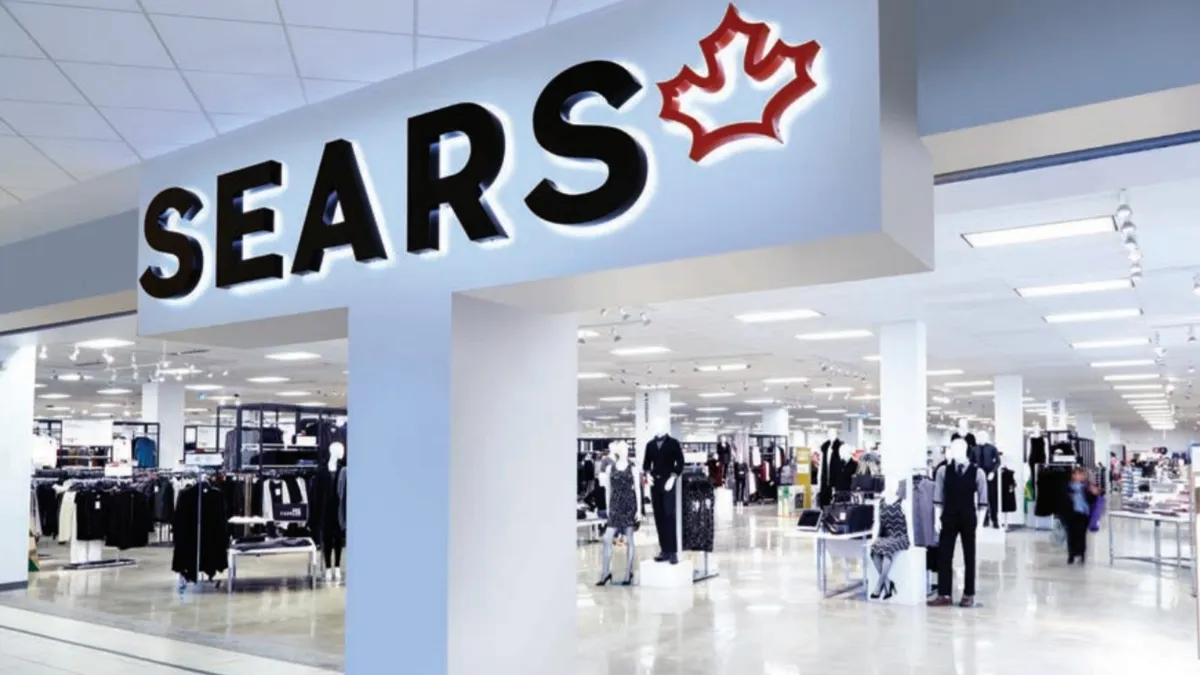Dive Brief:
- Sears Canada is no more, but the drama around the retailer's liquidation hasn't died. Some Sears Canada creditors are looking at around $3 billion in dividends paid out to Sears Holdings CEO Eddie Lampert and his hedge fund, ESL Investments, since 2005, CNBC reported Monday.
- A group of Sears Canada pensioners, pointing to the dividends paid to Lampert and his fund, requested an Ontario court to appoint a trustee to look for more funds for creditors, according to the CNBC report. A Sears Holdings spokesman said the company's board authorized the dividends "during a time when Sears Canada was clearly solvent" and had a healthy balance sheet. "We believe any attempt to reclaim those dividends would be unfounded," he said.
- Meanwhile, as Sears Holdings closes another 100 stores at the outset of 2018, other major retailers could benefit from the department store retailer's retrenchment, according to a UBS analyst report emailed to Retail Dive. Those retailers include: Home Depot, Lowe's and Best Buy (which have been stealing share from Sears' appliance business for years), as well as Pier 1, Walmart, Dick's Sporting Goods and others. "Retail has always been a competitive business," a Sears spokesman said in an email, pointing to efforts Sears has made to boost sales, including partnering with Amazon to sell Kenmore products and testing new store formats. "Moving forward, we will continue to sharpen our focus on our best Sears and Kmart stores, best categories, and best members..." the spokesperson added.
Dive Insight:
The failure of Sears Canada was not quiet. It clearly left thousands of employees bitter over the management and ultimate collapse of the company, which Sears Holdings spun off several years ago but which was still largely owned by Lampert and Sears at the time of its initial filing for creditor protection last summer.
The Canadian retailer entered court with a plan to reorganize, but as time passed and efforts to find a buyer for the company fell through, Sears Canada gave up. It announced in October it was going out of business. Meanwhile, during the court process, Sears Canada employees publicly fumed as managers took large bonuses while the retailer's pension payouts became uncertain and employees lost jobs through the restructuring process.
In an extensive blog post, Lampert defended the dividend payouts and took issue with what he called a "distorted narrative featured in the media to date." Lampert said that, "I believe that for many years Sears Canada had the resources and the opportunity to transform its business in the face of the pressures on all brick-and-mortar retailers resulting from the movement of consumers to online shopping."
He went on, "However, in 2016, the company made certain strategic decisions that proved unwise, including pursuing a more aggressive operating strategy to drive sales growth, which consumed cash and required incurring new borrowings in early 2017 for the first time in over a decade." Lampert added that he raised concerns about this with Sears Canada management, to no avail.
In any case, the company's debt obligations outpaced its efforts at a turnaround, sending the company to the retail graveyard. Some stakeholders, though, aren't letting go, as they examine the money that left Sears Canada for the pockets of Lampert and his fund.
In his post, Lampert attributed the dividends to real estate transactions earlier this decade and noted that, at the time of some major shareholder distributions (to the tune of about $485.2 million in U.S. dollars), Sears Canada still retained most of its stores and employees and had no funded debt.
Given that Sears Canada was majority owned by Lampert, ESL and Sears, and was once operated by Sears, some investors and other observers have been watching the Sears Canada bankruptcy closely for signs of how Lampert might ultimately handle Sears Holdings' well-documented financial struggles.













